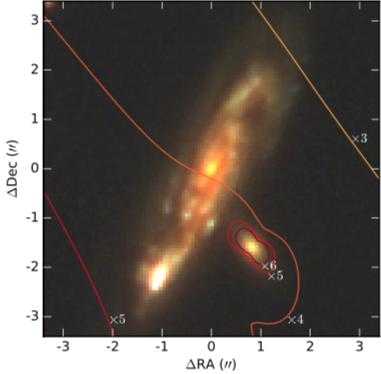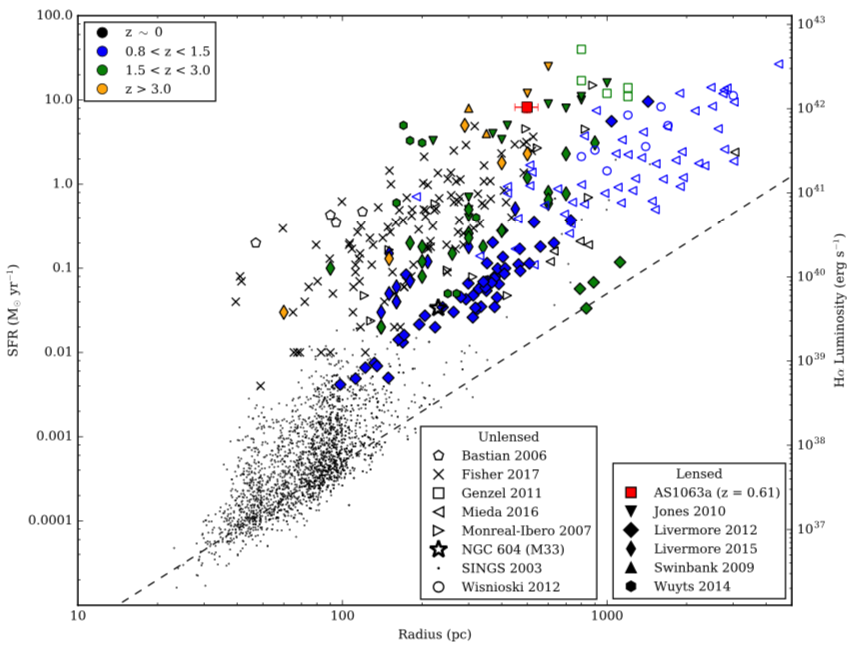Research
Discovery of a Luminous Kiloparsec-sized H II Region in a Gravitationally Lensed Infrared-luminous Galaxy at z = 0.6


The first HST surveys of galaxies at redshifts z > 1 found that this population of galaxies have clumpy morphologies. These clumps are thought to be giant star-forming regions, much larger and luminous than the ones found in nearby galaxies. However, it is unclear whether these clumps are real or artifacts of the telescope's resolution. Surveys of gravitationally lensed sources have only exacerbated the problem as they have found many large clumps and small clumps with an apparent redshift evolution of size and luminosity. However, the selection of this population is highly biased as it primarily selects a galaxy's UV/optical emission. Here we find a gravitationally-lensed dusty star-forming galaxy at redshift z = 0.6 in the Hubble Frontier Fields cluster AS1063, undergoing a starburst, with a giant kiloparsec-sized clump (left panel). When we compare the clump's size and SFR to UV/optically selected samples (right panel) we find that it as luminous and large as the clumps at high redshift (Walth et al. 2019). While this giant 1 kpc luminous H II region (10 M☉/yr) resembles clumps at high redshift, it only has gas fraction of 0.26, hinting that the star formation process could be different for dusty, star-forming galaxies. Recent work by Cosens et al. (2018) has shown evidence that there are two populations of clump formation, which depends on whether the galaxy is undergoing a starburst.